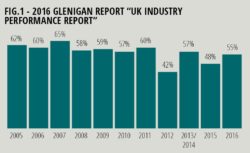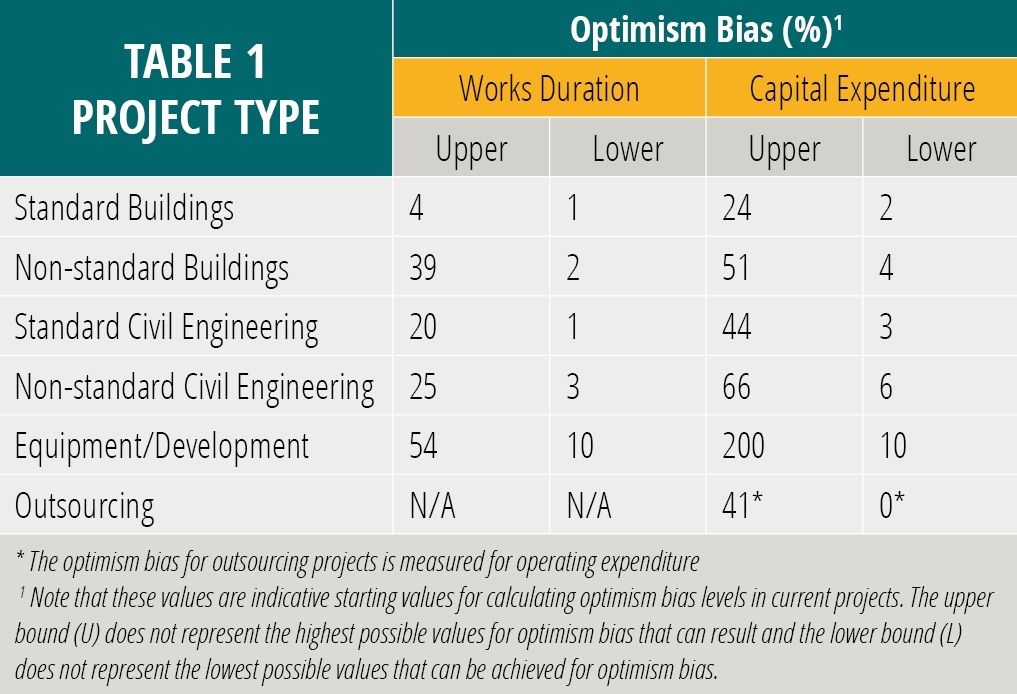David Wileman – Diales Delay Expert addresses the risks of being an optimist, especially when it leads to spending more than originally planned.
I was sitting at my desk on 22 December 2017 thinking, “there’s lots of shopping days left until Christmas…”. Quite frankly, once again I was kidding myself and it looked as though my good lady wife would be getting the same as last year. A last minute panic buy. The problem with a panic buy, of course, is that they are always expensive. Always!
How did this happen again? How did I lull myself into thinking I had lots of time and how does that lack of time always end up costing me more?
My problem is that I am an optimist.
Misplaced optimism, it seems, is not limited to me and my seasonal purchases but rather to the construction industry as a whole. A quick Google of the word ‘optimism’ provides the definition, “hopefulness and confidence about the future or the success of something”.
Optimism is prevalent in the construction industry, to the extent that the National Audit Office prepared a report (issued in December 2013) entitled Over-optimism in government projects. The foreword advises that: “This report looks at a particularly persistent risk management problem – the difficulties caused for government projects by unrealistic expectations and over-optimism.”
The report sets out that there are many reasons why projects fail to meet expectations, such as poor project management and the impact of external factors beyond the control of those responsible. Further, that the challenges of delivering the projects are, “compounded by the endemic over-optimism which characterises decisions to commit to projects and the subsequent management of them.”
This report follows The Green Book (2003), Appraisal and Evaluation in Central Government prepared on behalf of HM Treasury. Annex 4, Risk and Uncertainty, includes a section entitled Optimism Bias which helps to explain why engineers, and the construction industry in general, seems to suffer from its optimistic point of view. The headline point of Annex 4 describes optimism bias and the systematic tendency to be over-optimistic about key project parameters in relation to:
HM Treasury. Annex 4, Risk and Uncertainty, includes a section entitled Optimism Bias which helps to explain why engineers, and the construction industry in general, seems to suffer from its optimistic point of view. The headline point of Annex 4 describes optimism bias and the systematic tendency to be over-optimistic about key project parameters in relation to:
- Capital costs.
- Works duration.
- Operating costs.
- Under delivery of benefits.
Given that I am a planner, who takes instructions as an expert witness, I will concentrate on the second bullet point. The Green Book says:
- Estimate the time taken to complete the works.
- Apply adjustments to these estimates, based on the best empirical evidence relevant to the stage of the appraisal.
- Subsequently, reduce these adjustments according to the extent of confidence in the works duration estimates, the extent of management of generic risks, and the extent of work undertaken to identify and mitigate project specific risks.
- The estimates of works’ duration, and the adjustments for optimism, should ideally be reviewed independently.
Delay experts are often instructed to review programmes and to provide an opinion as to whether the original (or baseline) programme/timescale is reasonable or not. More often than not this instruction is received after the project in question has suffered delay and late completion. Such an analysis should be done before the project commences and at key stages throughout the project.
The latest statistics show that in 2016, 55% of projects reviewed for the survey were completed within (or bettered) the planned out-turn time. The trend over the past ten years as shown in Fig. 1 (below).

This leaves 45% which ultimately took longer than planned. As shown in Fig. 1, within the construction industry there is (and has been for many years) a systematic tendency to be over-optimistic about how quickly projects can be delivered.
The question that keeps resounding around the construction and engineering industries year-on-year is, “How do we prevent optimism bias?”.
The answer is not complicated and is the same question posed to delay experts after the event. That question being, “whether the programme/timescale is reasonable or not?”. The only difference is the timing of the question.
The Green Book suggests that optimism bias can be minimised as follows:
- Project managers, suitably competent and experienced for the role, should be identified.
- Project sponsor roles should be clearly defined.
- Recognised project management structures should be in place.
- Performance management systems should be set up.
- For large or complex projects:
- Simpler alternatives should be developed wherever possible.
- Consideration should be given to breaking down large, ambitious projects into smaller ones with more easily defined and achievable goals.
- Knowledge transfer processes should be set up, so that changes in individual personnel do not disrupt the smooth implementation of a project.
Minimising optimism bias is expanded upon with the Supplementary Green Book Guidance prepared from advice provided by Mott MacDonald (2002) in Review of Large Public Procurement in the UK. The objectives of this supplement are to ensure that companies:
- Make adjustments to their estimates of capital and operating costs, benefits values and time profiles.
- Provide a better estimate of the likely capital costs and works’ duration.
The guidance recommends that adjustments are made to activity/project durations based on data from past and similar projects, as adjusted for the unique characteristics of the project in question. By way of example, Table 1 within the supplementary paper provides adjustment percentages to be used to counter optimism bias (to be used in the absence of more robust evidence) as follows:
Within the supplementary note, the following good practice stage reviews of the project to be developed are advised (with respect to planned programme durations):
Step 1: Decide which project type (from Table 1) to use in order to ensure the level of risk pertaining to the most appropriate project type is utilised.
Step 2: Always start with the upper band to provide a less optimistic assessment.
Step 3: Consider whether the optimism bias factor can be reduced by assessing the upper band percentage against how contributory factors to delay can be managed.
Step 4: Apply the optimism bias factor to the planned contract duration.
Step 5: Review the optimism bias adjustment.
These recommendations, if followed, would at least provide a framework for the programme to be assessed. Such a framework is beneficial when reviewing programmes at high-level but has limited applications when assessing more detailed programmes prepared at the tender stage, prior to commencement of the works or shortly prior to award of contract.
In order to provide a robust programme for the works, prior to mobilisation, I would suggest that the following process should be followed, expanding on the recommendations above:
- Ensure a robust estimate for the works has been prepared and that this estimate does not suffer from similar optimism bias.
- Review the programme to ensure that the estimate is accurately reflected by manhour/manpower allocation and requirements for equipment/plant/materials embedded within the programme activities.
- Ensure that the programme is robustly logically linked.
- Ensure that the critical and near critical paths are reasonable and that no activities have excessive float.
Only after (and not before) points one to four have been satisfied, then the progress of removing optimism bias should be addressed. The importance of ensuring a robust logically linked programme is in place, before optimism bias is assessed, being of primary importance because such programme reviews provide little benefit if they are imposed on a deficient programme.
Factors can then be applied to the programme based on project type, prior experience, and the perceived expected management of risk factors. Further, such analyses do not need to relate to the entire project, as risk factors can be applied to a programme to deal with other issues which are often the subject of over optimistic thinking, such as:
- Growth expectancy.
- Individual subcontractor performance.
- Weather factors.
- Completion and close-out phase of the project.
Addressing the potential for problems and optimism bias before the project timescale is set will ultimately bring benefit to the out-turn duration of the works. Many readers will recognise the old adage that the last 10% takes 90% of the time. Whilst this phrase in itself is an over-estimate, it does accurately reflect that the works to complete a project are never simple. By removing the optimism bias from a project, the preceding works are started earlier by necessity, thereby reducing the strain on the back-end of the project timescale.
Therefore, in order to prepare a programme which is capable of being achieved and eradicating over optimism, I would recommend:
- Prepare a logically linked, fully resourced, robust programme.
- Have the programme checked by a third party who is experienced in such work.
- Ensure that the programme reflects the estimate and availability of resources (manpower/equipment/plant/materials).
- Undertake workshops to review for optimism bias relating to:
- The baseline programme/work type.
- Previous experience of similar projects/clients.
- The possibility of growth.
- The local workforce capacity.
- Individual subcontractor performance.
- Key deliverables.
- Weather factors.
- The completion and close-out phase of the project.
By accepting that programmes and planners are optimistic, we can readdress the balance by taking just a little time to ensure that the next project will not fall foul of optimism bias.
Of course the other downfall of being an optimist, is that you always end up paying way too much for your wife’s Christmas present.
Download here